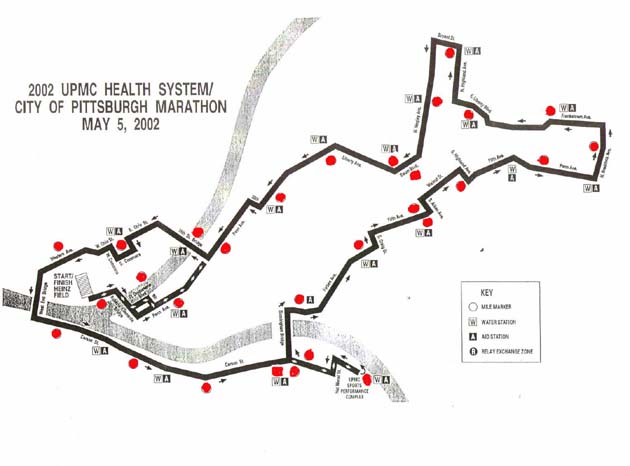
Radio hams were assigned to each of the 26 mile posts, to the 4 relay stations, and to the emergency vehicles. Bicycle mounted operators followed the wheelchair racers. There were radio hams assigned to the aid stations, and some were assigned to shadow officials during the race. Others were positioned on the sweep vehicles and busses. And a team ran the communications center in the press box at the stadium. There were a total of 139 radio hams working this race.
The purpose of the radio communication was to keep the race officials informed of all that was going on along the course of the race. We reported when the lead wheelchair racer passed our position, and again when the lead male and female runners passed our spot. Headquarters knew the progress of the race from these reports.
Early, before the race started, amateur communications was used to call for supplies, answer questions as to assigned locations, etc.
Any runner dropping out during the race was reported to net control, including subsequent action: runner transported to a hospital, hitching a ride with a friend, remaining at that location, etc.
This infomation was posted at the end of the race, so that family members could track down their missing racers easily.
139 radio hams worked for the 2003 marathon. We were among an army of volunteers, including medical personnel at the aid stations, teams of teenagers at the fluid stations mixing up the drink and passing it to the runners. Police were stationed at every intersection to make sure that unaware motorists did not happen upon the course. And afterwards, the cleanup crews moved in to do their work.

|
